What determines natural hair color? We have already said that the pigment melanin, which is produced in the hair follicle, is responsible for hair color. Let us recall that melanin comes in two types: black-brown - eumelanin and yellow-red - pheomelanin. Color saturation depends on the concentration of the corresponding pigments in the hair.
A large amount of the dark pigment eumelanin drowns out the reddish shades of pheomelanin and dyes hair dark colors. When pheomelanin predominates in the hair, it acquires red shades. And finally, hair looks blond when the amount of eumelanin and pheomelanin is small.
The concentration of pigments in hair can change throughout a person's life. So, in children the concentration of pigment is low, because of this their hair is often lighter than that of their parents. However, upon reaching puberty, children's hair darkens.
Natural hair pigments melanin are insoluble in water. They form strong bonds with proteins, so natural pigments can only be removed from hair by destroying them. The destruction of pigment and its individual components can occur under the influence of ultraviolet rays (hair burnout) or chemical treatment (bleaching, lightening, perm).
It should be noted that the main changes during chemical hair treatment, and permanent dyeing in particular, occur in the cortical layer of the hair (cortex), since melanin color pigments are concentrated there.
The proportion of melanins in the total hair mass is incomparably small - only 3%. But even such a small amount of pigments is enough to give the hair color. Melanins themselves are very small, they are granules ranging from 0.2 to 0.8 microns in length, which are composed of microscopic protomolecules, and those of even smaller particles that form three- or four-layer structures. As a result, the color of a natural pigment is the sum of the combined color of all the colored microparticles that make it up.
Hair colors
People are usually divided by hair color into brunettes, brown-haired, blond, red and gray. In Russian, as well as in other East Slavic languages, the concept is also used light brown. Let's look at the name of each group of hair shades.
- Brunette(from French brunet) - black or very dark color hair (dark brown).
- Brown-haired(from the French chatain) - dark chestnut, light chestnut.
- Light brown- light brown color. It is also interpreted as an intermediate color between black and blond. In this meaning it coincides with the brown-haired mushroom. However, in South Slavic languages, fair-haired is synonymous with blond.
- Blond(from the French blond) - light, blond, light brown honey mushroom.
- Ginger- yellow-red, green-orange shades.
- Gray-haired- white or white-yellow hair, partially or completely devoid of color pigments.
As we can see, the listed everyday concepts of hair color are quite broad, and the boundaries between them are blurred.
A brown-haired man intersects with a fair-haired man, a fair-haired man with a blond man, and a brunette may also turn out to be a dark brown-haired man. In addition, there are countless variations of honey mushrooms within each group. To more accurately describe hair styles, a color coding system was introduced in world hairdressing practice.
Coding system
According to the coding system, hair color is described using two characteristics: the level of tone depth and the direction of color.
Tone depth level is a gradation of natural hair color by lightness. In hairdressing coloristics, it is generally accepted that natural shades contain blue, red and yellow pigments mixed in different proportions. 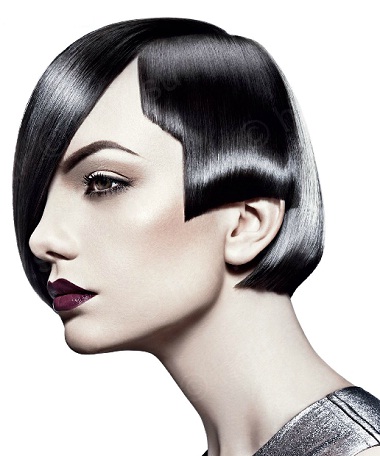
In practice, to systematize the shades of natural hair, a scale of tone depth levels from 1 to 10 is used.
Number 1 corresponds to the darkest black color, 10 - the lightest (see table “Natural hair color scale”). This scale is a guideline and may vary slightly among different hair dye manufacturers. Some expand it to 12 levels, others narrow it by baking some levels. Also, the names of the basic honey agarics change from manufacturer to manufacturer.
Some use the concept of “brown-haired” instead of “brown”, others replace “fair-haired” with “blonde” and vice versa. This is mainly due to the linguistic tradition of the countries that produce cosmetics and the nuances of translating the names of honey products into Russian.
SCALE OF NATURAL HAIR SHADES
|
Tone depth level |
Natural hair shade |
|
brunette (rich dark brown) |
|
|
dark brown (dark brown) |
|
|
brown (medium brown) |
|
|
light brown (light brown) |
|
|
dark blond (dark blond) |
|
|
blond (medium blond) |
|
|
light blond (light blond) |
|
|
very light blond |
|
|
very very light blond |
What about natural red color? Why is it not on the scale of basic colors, you ask. Don't worry, no one has forgotten about him. Red hair, like others, also has a certain depth of tone; it can be lighter or darker. However, due to the preponderance towards the yellow-red tint, they cannot be called neutral.
In the hairdressing palette, red colors form a separate group. Exactly like all other colors with a predominance of certain tones (yellow, red, purple, etc.). To indicate additional color nuances of hair, the characteristic color direction has been introduced.
Color direction
|
Predominant tones (pigments) |
|
|
Neutral (natural) |
|
|
Ashen |
Blue, blue-red |
|
Silver |
Blue, blue-red |
|
Orange-red |
|
|
Mahogany |
Red and purple |
|
Violet |
Violet |
|
Pearl |
Blue and purple |
The direction of the color is the undertone or the scent that ultimately appears on the hair. When a client says that she wants copper-colored hair, she, without knowing it, names exactly the direction of the color. The palette of almost any hair dye includes golden, ash, copper, red, and purple honey mushrooms (see table “Color Direction”).
The direction of color is usually indicated by numbers or letters following the number of the tone depth level through a separating sign (period, comma, dash or fraction). As a result, the dye number may look like this: 9.6; 9.6; 9/6 or 9-6. When color direction is indicated by letters, separators are not used (8G, 5C). It must be said that the color direction scales of different cosmetics manufacturers rarely completely coincide.
So the number 2 in some dyes means the violet direction, in others matte shades ( green base). The number 5 most often means a red tone, but in Majirel dye (L’Oréal Professionnel) red is number 6. You will find more complete information about color coding systems for specific hair dyes in the second part of the reference book. Below we will look at the color coding rules common to most professional dyes.
General Color Coding Rules
- The first digit in the dye number indicates the level of tone depth, the second - the direction of the color.
- The neutral or natural direction is most often indicated by the number 0 or the letter N. They indicate the purity of the shade and the absence of additional color nuances.
- If in the dye number the separating sign is followed by two or three numbers or letters, then the first of them indicates the dominant honey fungus, and the second and third - additional ones. The serial number of the honey mushroom determines its quantity. The closer to the dividing mark it is, the more of it there is, and vice versa.
- Repeating identical numbers or letters in the direction of the color indicates the intensity of the hue (5.77; 8.44).
- If a letter system is used, additional marks are indicated by the initial letters of the color names in English and/or another (most often the native) language of the brand. We offer you a code for deciphering shades, the designation of which includes letters of the English alphabet:
- A - ash - ashy
- B - belge - beige or brown - brown
- C - soreg - copper
- G - gold - golden
- M - mocha - mocha
- N - natural - natural
- O - orange - orange
- P - pearl - mother-of-pearl
- R - red - red
- V - violet - purple
So, thanks to the coding system, we can assign a number to any score or, on the contrary, decipher it.
Every woman sooner or later thinks about dyeing her hair. Then the craving for change takes its toll, and color changes become regular. Undoubtedly, main role Your own preferences and appearance characteristics play a role in choosing shades. However, it would not be superfluous to take into account fashion trends who present surprises to beauties every year. What hair colors are most relevant in the new season? Let's answer this question.
To begin with, I would like to note the coloring technology, which combines several shades at once. We're talking about ombre. Its essence is to create a transition from dark roots to the light ends.
Of course, ombre is not a new thing this season. However, it has acquired some features that are based on the principle of naturalness that dominates fashion this year. Now the transition between adjacent colors has become smoother, more gradual, and the shades used have become closer to natural. The master's task is to create the effect of sun-bleached ends, as shown in the photo.
Fans of extraordinary solutions can turn their attention to inverted ombre. It is performed as usual, only the hair turns out light at the top and dark at the bottom. Stylists recommend using warm, natural shades for coloring, such as milk chocolate, cinnamon, honey, and wheat blondes. They have different names, but are distinguished by a soft golden sheen.
The photo shows great examples of trendy ombre.
The creativity of the unnatural
Especially creative fashion stylists have interpreted trends based on closeness to nature in their own way. As a result, the green of young foliage, the blue of the sky, the turquoise of the ocean, and shades of lavender appeared on the hair of girls who were inclined to experiment. It looks very beautiful and impressive. The trend was quickly picked up Hollywood divas, whose curls can be seen in many photos.
On naturally dark hair unusual shades They don’t look as provocative as on light ones. The result is a kind of reflection that favorably emphasizes black and chestnut.
By combining several colors, professional artists create incredibly attractive ombres that are guaranteed to attract the attention of everyone around. Girls with hair like in the photo look like fairy-tale princesses or guests from other worlds.
The described hair colors look very interesting with pixie and pageboy haircuts. Experts recommend not to immediately resort to permanent coloring. No one can guarantee that the result will satisfy you, but it will be very difficult to get rid of it.
Luxury for brown-haired women
What do fashion trends offer brown-haired women in the new season? Those with dark hair should use cool shades. Mostly we're talking about about ashen tones. Please note that this word is usually included in the name of the paint, but there may be exceptions, so consultation with a specialist is necessary.
The ash shade gives the hair a special chic and discreet aristocracy. This is no longer a conspicuous golden glitter; in the new season it is fashionable to be the Snow Queen.
What brown-haired women should avoid without any options is blue-black. This shade looks unnatural, so in the new season it is considered vulgar and literally has no right to exist. There are, of course, exceptions. If you really don’t want to part with your favorite color, you can soften it slightly, give it a chestnut tint, or make an ombre.
The photo shows examples of fashionable shades.
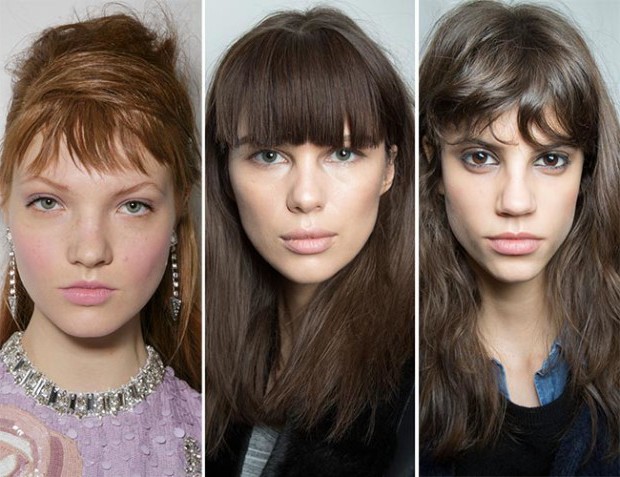
Girls with natural hair brown hair In general, you don’t have to think about coloring; they are already very lucky with the color. However, if the desire for change is still very strong, you should not resort to drastic changes. Give your hair only light shades of cinnamon, chocolate or dark chocolate. You can also try so-called “frosty” colors.
The hair of the models in the photo looks beautiful, natural and elegant.

Kingdom of redheads
In the coming season, stylists have chosen the ideal colors for red hair. And let copper not apply precious metals, she can make hair a real priceless treasure!
Any copper shades of red will be at the peak of popularity in 2016. At the same time, even a hint of redness should be avoided; it is considered too cheap and unnatural. Hair color should be rich, but muted. No carrot-orange and gold, everything is just like the girls in the photo.
Only young girls who like to look bright and are not afraid of experiments can afford to deviate from these rules. The deep, rich colors of youth often seem too grown-up. They can actually add several years to very young faces. Therefore, stylists recommend that representatives of the younger generation use bright red, but without a red tint; copper should still predominate.
On short hair Coloring will look great, and long curls will be decorated with a chic ombre in red shades, demonstrating all the richness of the palette from the darkest to canary light.
The photo shows an example of a fairly discreet ombre.
Noble blondes
On blonde hair, any fashion trends appear most clearly. This also applies to the desire for cold tones. Last year's popularity of warm wheat and honey shades has faded away. Now you should turn your attention to the palette of Nordic and ash blondes. They are the ones who will make the image as noble as possible.
It is worth noting that a correctly selected and applied ash blonde should in no case look like gray hair. It's more like frost. Paints intended for home use will not be able to give the desired effect, but you need to know how to handle professional paints. Therefore, for ash blonde, you should go to a good and trusted hairdresser.
New trends will delight women with gray hair. Now they won't have to struggle to hide them. It is enough to just slightly refine it, add mysterious highlights, highlighted strands - and the masterpiece is ready!
The photo shows great examples of how ashy hair should look.
However, the offers for blondes do not end there. They offer a completely new strawberry tone. It suggests a subtle pink tint. Other “berry” colors are also gaining popularity. However, despite the name, none of them allow the presence of red. These shades are great for coloring.
The palette of acceptable blondes is actually very large. The main thing here is to avoid the appearance of the eternal scourge of all blondes - a yellow tint.
As with brown-haired women, natural blondes don't have to do anything to their hair. But they were even luckier. The summer sun will very quickly decorate their hair with a natural and unsurpassed ombre, indistinguishable from the works the best masters. Look at the photo how gorgeous this shade is!

Natural beauty of light brown
While blondes and brown-haired women will have to work hard to achieve the desired cool shade, fair-haired beauties in most cases do not need to do anything. Their natural shade is exactly that, so working on it can come down to lightly lightening individual strands.
At the same time, of course, no one forbids choosing other hair colors to look like the beauties in the photo.
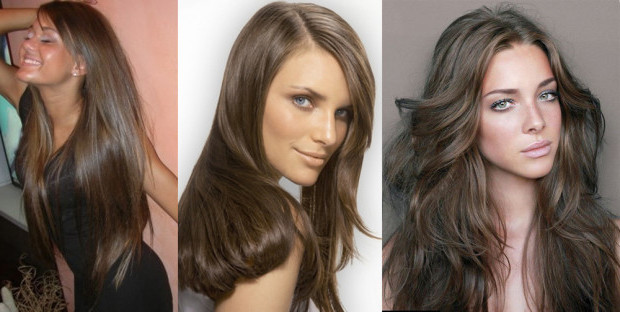
Fashion strives for naturalness, and even with the help of coloring everything more women and girls strive to achieve the most natural result possible. But it is precisely in natural tones - not too bright and sharp, often attractively soft - that the variety of features and nuances of color is so great that it can be difficult to determine the desired color scheme and indicate its name. However, it is enough to understand the basic classification of suits so as not to make a mistake in the name.
Professionals divide hair coloring into 6 main groups:
- blond;
- brunette;
- brown-haired;
- ginger;
- light brown;
- gray-haired
It is interesting that the natural color of hair is not due to the presence of six pigments, as one might think by looking at this classification. In fact, there are only two of them:
- pheomelanin, which in its pure form is yellow or red;
- eumelanin, in a purified state, is black or brown in color.
Mixed in various proportions, these two substances make up the entire variety of hair of representatives of the most different countries, peoples and appearance types. The “suit” also depends on the concentration of pigment and the texture of the hair.
Unfortunately, even professionals cannot repeat the magic of natural coloring mixed from two pigments - there are too many subtleties that are simply impossible to calculate and will have to be taken into account. Therefore, in order to achieve naturalness when dyeing hair, a wide variety of combinations of artificial pigments are added to the dye compositions; their palette is very wide.
In each group, the variety of species is enormous, but they are also easy to classify according to saturation, “temperature” and other criteria.
Blonde

Blonde categories are the lightest. Blonde is quite rare and is common mainly among northern peoples. However, even among nationalities whose main type is burning blonds, it is very rare that there are blond representatives.
The color palette is divided according to the degree of whiteness, as well as “temperature”. Each manufacturer has its own name for the paint, but the main ones that characterize the palette are as follows:
- Linen – almost white, matte or with the slightest warm glow.
- Platinum is white, with pronounced cold nuances.
- Golden – highly whitened, with golden, straw notes.
- Ashy – strongly bleached, with a pronounced gray or silvery sheen.
Saturated:
- Wheat - with a rich caramel color.
- Beige and neutral - bright brown and light brown, very natural, pale brownish with a possible grayish undertone.
Brown-haired

This is a collective definition of tones that can be combined with the word “brown” or “chestnut”. The palette of the category is very rich and varied - from almost natural to almost brunette. In this case, colors can be warm, cold, or neutral. Natural brown-haired women are often distinguished by an unusually complex coloring of their hair, with many tints of color and an amazing play of different nuances. Often it is the brown ones that are most difficult to achieve by dyeing. In addition, such a color can be difficult to maintain, and it washes out faster than others.
But brown has many advantages:
- You can choose the right brown color for almost any color type, skin and eyes.
- These are the most natural of all categories.
- Rich chestnut shades have a magical property - they visually even out the skin, hiding minor imperfections and refreshing the complexion.
Light chestnut:
- Amber (caramel) – soft chocolate with pronounced red and copper tints.
- Honey is a rich color with sunny amber notes, close in intensity to medium brown, but much brighter and golden.
- Walnut is a more muted, neutral version of the same pigment concentration, with a grayish undertone.
Important: soft chestnut, obtained by dyeing, looks natural and beautiful when there are strands of hair of different depths of color in the hair - this color is rarely uniform in nature.
- Mahogany – rich, with garnet reflections.
- Ginger – reddish, with a golden undertone.
- Cold brown – neutral, thick, with a cold base.
- The coffee is deep brown, almost black, with chestnut reflections.
- Graphite – rich, deep, with a dark gray undertone, cold or neutral.
Picking up suitable shade, do not forget a simple rule: warm skin colors go with golden, reddish colors, cold skin colors go with cold ones. Combining “cold” with “warm” you risk visually aging your face and highlighting its imperfections.
Ginger
![]()
This color in its natural form is the least common in the world. It is caused not only by a special combination of hair pigment, but also by its special location.
The majority of owners of fiery hair live in Ireland and Scotland, but other nations also occasionally display this color.
All red colors are certainly warm. Slightly more subdued they may have a reddish tint. But, in any case, girls with warm skin can afford this tone; unfortunately, it will not decorate everyone else.
The red color palette is quite diverse:
- Strawberry – bright copper with a red tint.
- Light Copper is a bright color with fresh copper and bronze.
- Amber - pronounced golden red with caramel.
Saturated:
- Fiery red is the “hottest”, with pronounced red notes.
- Mahogany is a rich hair color with a distinct red.
- Bordeaux, eggplant - almost cool red, with a deep burgundy tint.
- Ripe plum is a reddish-purple tint of dark hair.
- Dark copper - deep, with a red tint.
Light brown
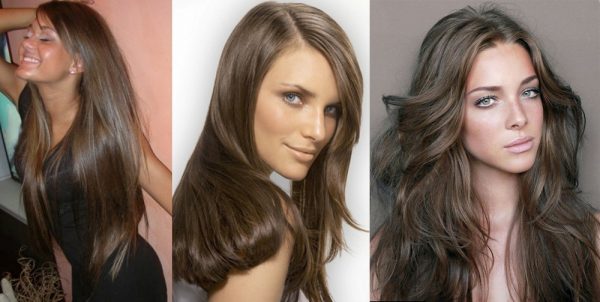
Neutral palette, typical for most representatives northern countries. These soft hair tones look very natural. Their shade is rarely completely uniform, representing a play of delicate tints from soft ash to brownish.
Achieving a natural tone is quite difficult. Maintaining it is also not easy - the artificial pigments that are used for natural coloring are among the most unstable. However, now the light brown palette is at the height of fashion.
Light brown is almost always neutral or cool. A beige undertone gives it a slightly sunny orientation, and an ashy undertone gives it a cooler tone. The upper, whitened categories at their upper limit intersect with blonde tones, and saturated ones with brown-haired tones.
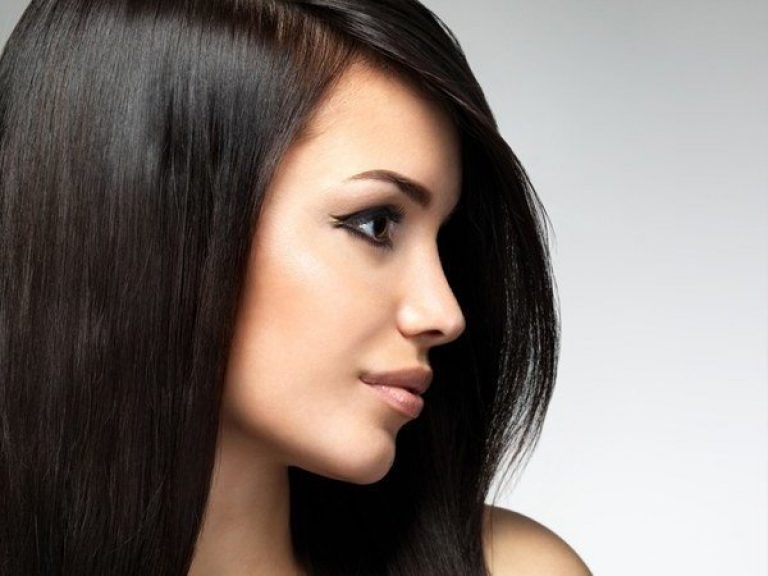
The most dark hair, which characterize the palette of any manufacturer. It is suitable either for very dark-skinned women, or for those with a contrasting appearance, in which white or pinkish, often cool-toned skin is combined with dark eyebrows and eyelashes, and bright irises.
The brunette palette includes colors from black to deep brown. On such strands the color is visible only as a reflection or tint. But this, nevertheless, allows black-haired people to be both “warm” and “cold” and “neutral”. Depending on whether the hair is shaded reddish/red, bluish/purple, respectively, or ashy.
It is not recommended to wear black for girls whose natural color is light: golden, reddish, ashen. The point is not only in the combination of facial colors and hairstyle, but also in the fact that the texture of a natural brunette’s mane, thick and shiny, is noticeably different from thin, delicate hair natural blondes. On such strands, the “brunette” will look unnatural.
Gray-haired

Gray hair is practically devoid of pigment. This is a white or white-yellow palette. But most often the undertone is cold - ashy. It looks noble if slightly shaded with bluish or purple, emphasizing the purity of white.
Choosing a suit
Once you determine what your tone is called, go according to plan.
Almost every woman resorts to hair dyes at least once in her life. Some people are not satisfied with their “native” color, others simply want to experiment. But every girl, regardless of what motivates her, needs to approach the process of choosing a new shade carefully, since tormenting her hair by constantly redying it is not particularly good. Therefore, you must initially decide on the shade to be sure that you will like the result. Let's get acquainted with the rich palette of hair shades to have an idea of what choice you can make.
Shades of blonde hair - palette
First, let's get acquainted with the palette light colors, since many girls are attracted to these shades. Blonde has been incredibly popular for several decades now, despite the fact that every season there are still many different fashionable shades offered.
Bleached blonde. Very light, as if a burnt-out shade of hair can be achieved with the help of lighteners. Most often they are used so that dark hair can be dyed a different color, but lighteners are also used to give the hair a very light tone. It's worth noting that the colors produced by lightening rarely look natural, although if you use a medium-strength lightener, you will get a very natural shade - this is how they usually look blonde hair, slightly scorched by the sun.
Smoky and pearly blondes. IN lately, after the popularity of the series “Game of Thrones” with the pearl-haired Daenerys (Emilia Clarke), this color became very popular. It doesn't look natural at all, but it's incredibly attractive. These blondes belong to the palette of cool shades for hair, so it is better not to choose it for girls who suit warm shades.
Caramel and honey blondes. These warm shades are great for all girls and look very appetizing. Honey blonde can generally be called one of the brightest representatives of the palette natural shades hair, as it looks very natural. And the caramel blonde, reminiscent of burnt sugar, looks very “candy” and cute.
Light blond. A shade that can be called classic. The hair of the beautiful Rapunzel of all people was of a light, golden hue. famous fairy tale. Very beautiful color.
Shades of dark hair color - palette
And now let’s get acquainted with a darker palette, which is no less interesting.
Light brown, chestnut and nut shades. All these colors can be called related. Very natural shades that look good on hair and suit girls of all four color types. In addition, these colors are rejuvenating, just like bright red. And it’s also extremely convenient that all these colors have a huge variety of shades, so every girl can choose the shade that suits her.
Black and blue-black shades. A classic of the genre, like golden blonde. It is worth noting that black looks more natural, while blue-black is very effective.
Hair color is determined by the presence of melanin pigment in the hair follicles. During production large quantity eumelanin hue can vary from dark brown to black. The presence of pheomelanin in a small amount will make the hair light, and in a large amount - red.
The concentration of melanins changes throughout life, so children's light hair may darken over time. If there is not enough pigment, the hair becomes gray.
Quick navigation through the article
Natural hair colors
The activity of melanocytes - cells that synthesize pigments that give hair color - is uneven along the entire length. Therefore, undyed hair looks more natural. Hair colors are as follows:
- Blonde is a blond, light, yellowish or golden hue. The most common blondes in Northern and Eastern Europe. There are more men with this hair color than women;
- Light brown - varies from light brown (caramel-honey) to dark brown (ash metallic or graphite). Widely distributed in Central Europe;
- Red is an orange or yellow-red hue. Natural red hair color is often found among residents of Scotland, Ireland, and Udmurtia;
- Brown - dark blond, chestnut shade. Widely distributed throughout the world;
- Brunette is a dark brown, black color with a bluish tint. The hair has a special shine. There is an absolute majority of brunettes on Earth;
- Gray is a light, yellow-white color acquired by hair when the production of melanin decreases or stops.
Color types of appearance
Correctly chosen hair color emphasizes the expressiveness of the eyes, hides minor skin imperfections, and refreshes the complexion. Knowing the color type helps you choose the right color, for example:
- Winter is a cold type, which can be contrasting or non-contrasting. The first is characterized by poorly tanning milky-white skin, blue or gray eyes. This type black will do or dark brown hair color. Low-contrast winter is characterized by dark, well-tanned skin, brown, olive-gray, brown-green eyes. Hair of a chocolate-cognac hue corresponds to this color type - dark brown or not a burning brunette;
- Spring is a warm color type, the characteristic features of which are: light, transparent, often freckled skin, blue, green, turquoise eyes. The ideal hair color for him would be light brown, red, honey with a golden tint;
- Summer is a cold color type, characterized by a bluish subcutaneous highlight, gray-blue, green, walnut-brown eyes. Ash-colored hair is suitable - light brown, blond;
- Autumn is a warm color type, differing more bright colors. Golden skin, difficult to tan, green, olive, brown eyes. Best color hair - red or dark brown.









